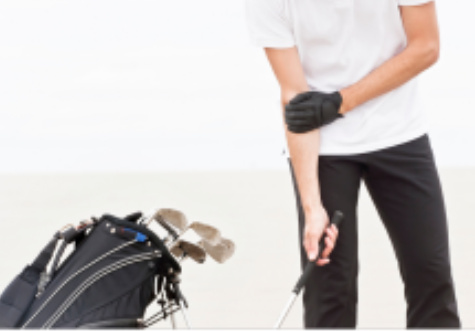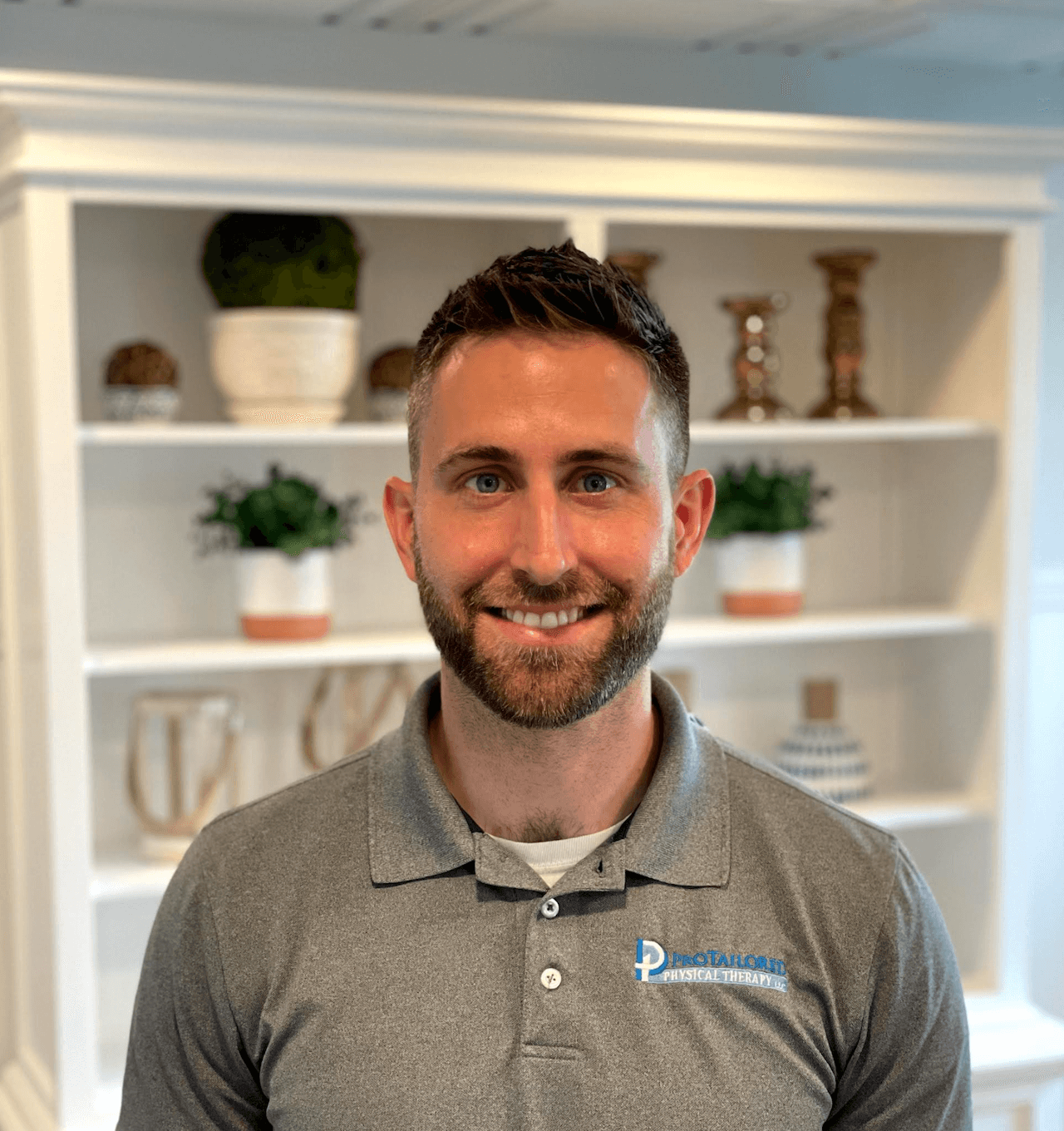Medial Epicondylitis (Golfer’s Elbow)


Dr. Jonathan Evans
PT, DPT, CMTPT, VRC, PDNC
Chief Executive Officer, Orthopedic & Vestibular Physical Therapist
Medial epicondylitis, or Golfer’s Elbow, is a painful condition that affects from the elbow to the wrist on the palm side and inside (medial side) of the elbow. The pain typically increases with flexion (bending towards the palm) of the wrist forcefully. It is given the name “Golfer’s Elbow” because often when swinging a golf club it forces excessive wrist flexion. Golfing is not the only cause, there are many other sports or activities at work or home that can put you at risk for a painful elbow.
What is Medial Epicondylitis or Golfer’s Elbow?
Golfer’s elbow is caused by excessive force, overuse, or overloading the wrist flexors which are used to bend the wrist towards the palm. The wrist flexor tendons join at the inside of the elbow, which is where symptoms commonly present, and the pain is caused from damage to these muscles and tendons. The symptoms are often associated with repetitive wrist flexion or wrist flexion against a resistive load.
Symptoms
Symptoms can come on suddenly or gradually over a period of time. Typically symptoms include pain or tenderness to the inner side of your elbow, stiffness at the elbow or when making a fist, weakness in your hands and wrists, and/or numbness/tingling in your fingers (typically the ring or little finger).
Causes/risk factors
Common activities that can lead to Golfer’s elbow include swinging a golf club, pitching a baseball, serving with great force in tennis, carrying a heavy suitcase, chopping wood, operating a chainsaw, lifting weights improperly, and frequent use of hand tools. Risk factors include. Risk factors may include age 40 and over, obesity, smoking, and performing repetitive activity at least 2 hours a day, and using poor technique with functional activities .
Treatment
Most individuals can have success with non-surgical treatment for medial epicondylitis. Initial treatment typically focuses on reduction of pain and facilitating healing of soft tissues. Then the focus becomes restoring flexibility of the soft tissues and improving muscle strength.
Therapy treatment typically combines various hands-on manual techniques to address the musculoskeletal pain, exercise, and education to promote ability to recover to your normal activities and prevent further injury. Some of the manual techniques can include: Instrument Assisted Soft Tissue Mobilization (scraping), Dry Needling, Joint mobilizations, Muscle Energy Techniques, and/or Active Release of Musculature.
Tips for those experiencing medial epicondylitis pain:
● If you start experiencing pain on the inside of your elbow REST! Give your elbow some time to rest, take a break from the activities that flare up your pain to allow the tissues to heal.
● Perform daily activities with your palms down and close to your body (i.e. carrying grocery bags, briefcase or purse, etc.)
● Avoid repetitive activities which require twisting the forearm from a palm up to the palm down position (i.e. rotating forearm while using tools.
● Focus on cardio exercises which will maximize blood flow for healing, core, or lower body exercise routines while healing, as long as activities do not increase your elbow pain, in order to let your elbow heal.
If you believe you may have Golfer’s elbow and would benefit from conservative treatments, please call us today! If you are having significant pain levels, pain to the touch on the inner elbow, or having difficulty with gripping, lifting, or carrying out daily activities due to increased pain, it may be a good idea to contact a healthcare provider to seek further recommendation for treatment. For more on medial epicondylitis (golfer’s elbow) or elbow pain relief, or to schedule an appointment, reach out to ProTailored Physical Therapy or call us at (260)739-0300.
